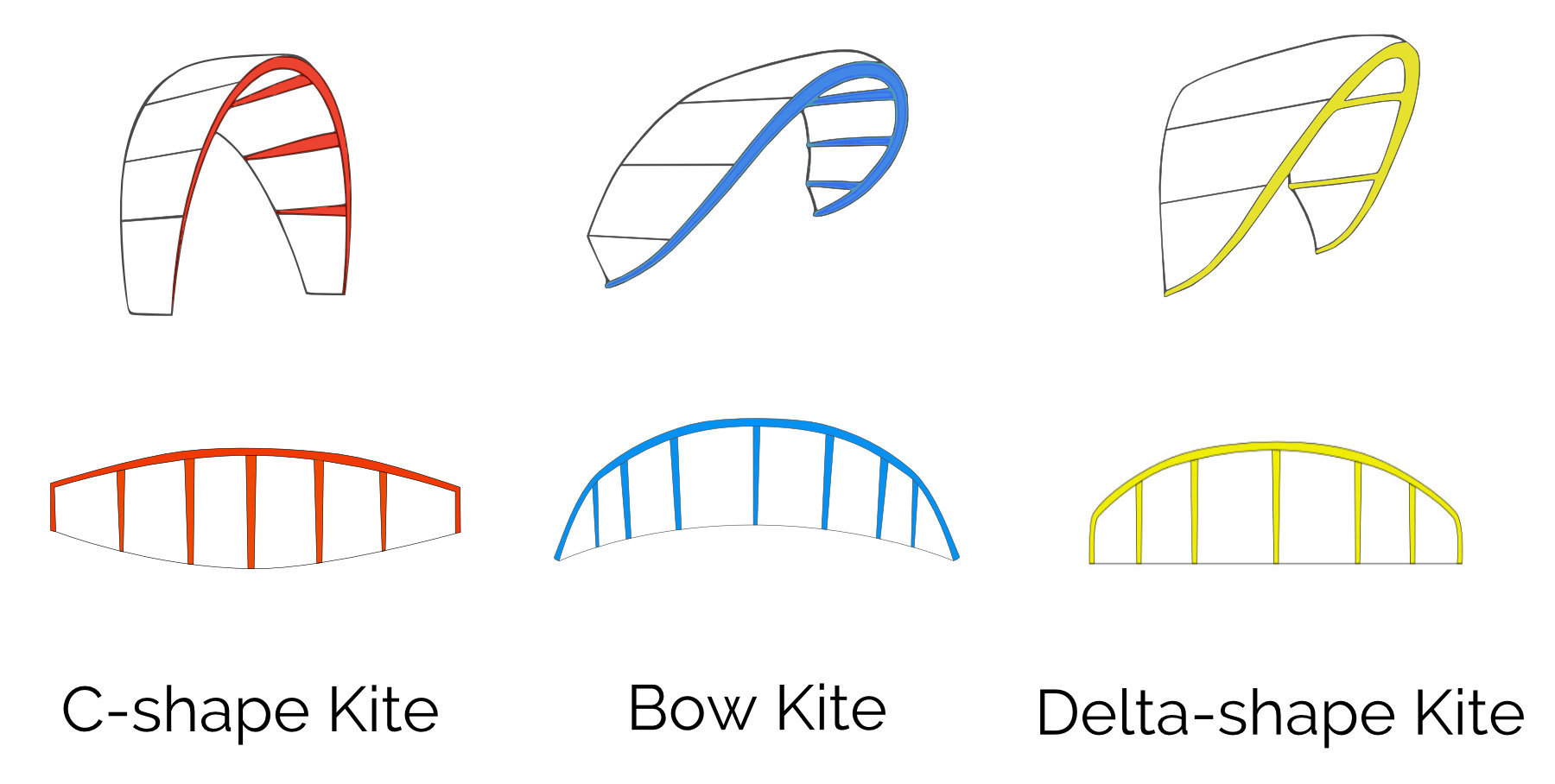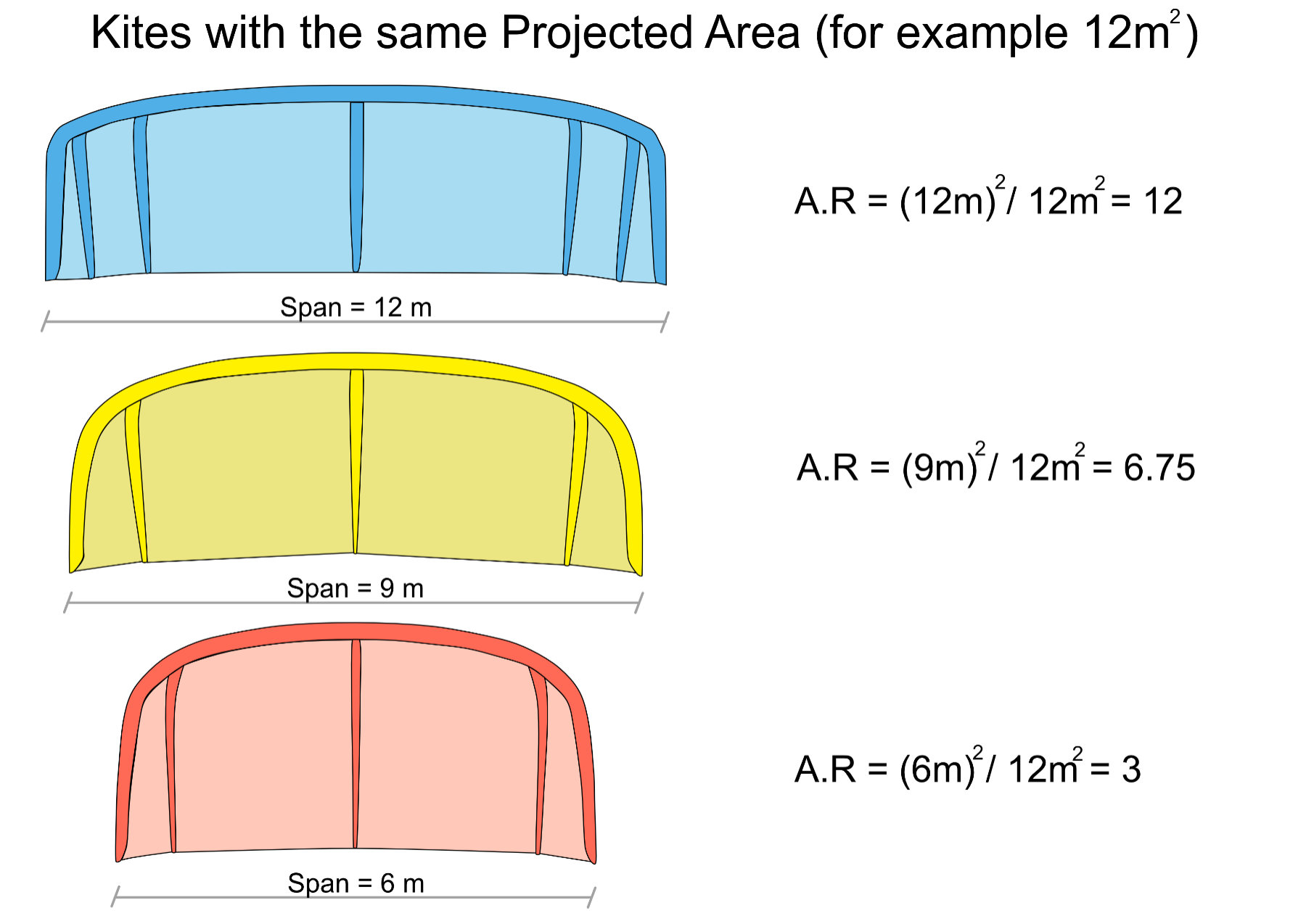Do you really use the right kite shape for your riding style?
Kitesurf has a lot to do with aerodynamics and kite shape behavior, let’s find how.
Being kitesurfing one of the fastest-growing sports, kitesurf producers have been challenging each other on the market with more and more innovation and possible product choices. The result is that there are so many types of kites out there that for beginners it can be really difficult to choose a suitable one to start with.
Even more advanced riders might end up using the wrong type of kite for the discipline they want to practice or their riding style.
Let’s try to simplify how different shapes influence the power kite behavior, to have a smart and reasoned way to choose our kitesurfing gear.
The three main parameters about a kite shape, which influence its performance are:
-
the arch shape;
-
the bridle system;
-
the aspect ratio.
ARCH SHAPE / BRIDLE SYSTEM
There are different arch shapes, from steep arch, also called C-kites, to flat arch. Flat arched kites sometimes were called Bow kites, especially at the beginning of their introduction, because of the curved shape of the leading edge and the trailing edge, which made them appear as bow-shaped from the perspective of the rider.
Nowadays we also have Delta shaped kites, where the trailing edge has been made straight giving a Greek Delta letter resemblance.
The main point we need to pay attention to here is that the arch shape determines how much of the canopy in the kite generates the uplift and how much of it keeps the stability in the lateral directions:
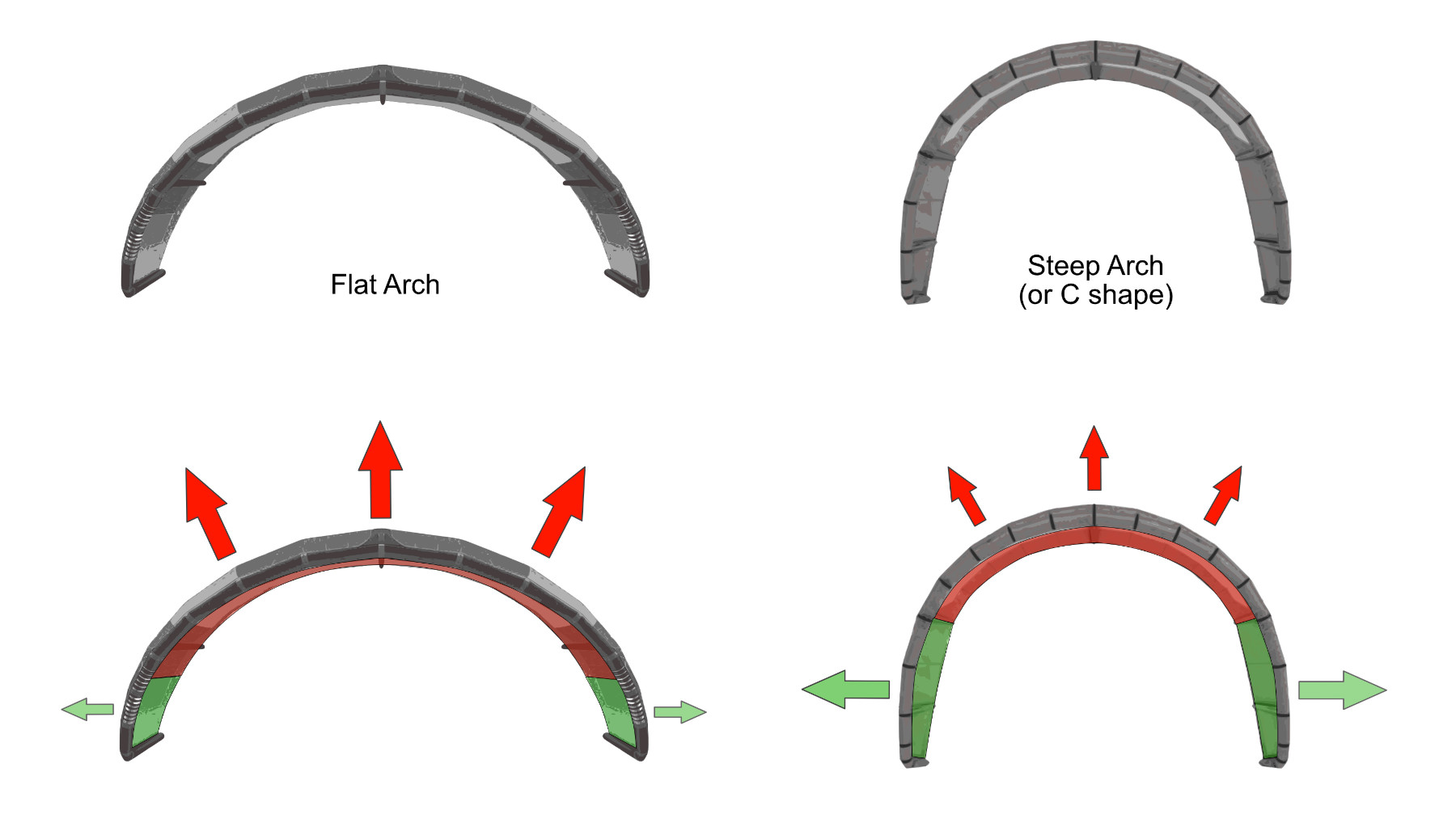
As we see in the flatter the kite shapes, the bigger component of the wind action goes to the uplift, while in steeper arch shapes the component of forces that pushes sideways gets important, playing a more influential role in the lateral stability.
It is easy to imagine that this can lead to bigger power capabilities in flat kites on one hand, and better side stability, steering responsiveness and drifting control in more C-shape kites on the other hand.
The other aspect related to the arch shape is the bridle system. Its structure depends on the shape of the kite, the more the kite gets flatter, the more it needs better support on the leading edge, to prevent it to deform in the middle of its section.
On the opposite side, a C-shape kite can function even without a bridle system, just with the lines attached to its tips. Said so, modern C kites use some form of minor bridle system or a 5th line not only as an emergency system or relaunch aid (purple elements in the image below) but as a real structural element.

Apart from shape stability, bridle systems have another important effect on the kite’s behavior: the capability of broadening the excursion of the angle of attack on the wind.
Below is represented the difference between a C-shape kite and a flat kite. Pivoting on the bridle system a flatter kite has a bigger leverage arm (B’), therefore its capability of changing the angle of attack (A’) on the wind is way bigger.
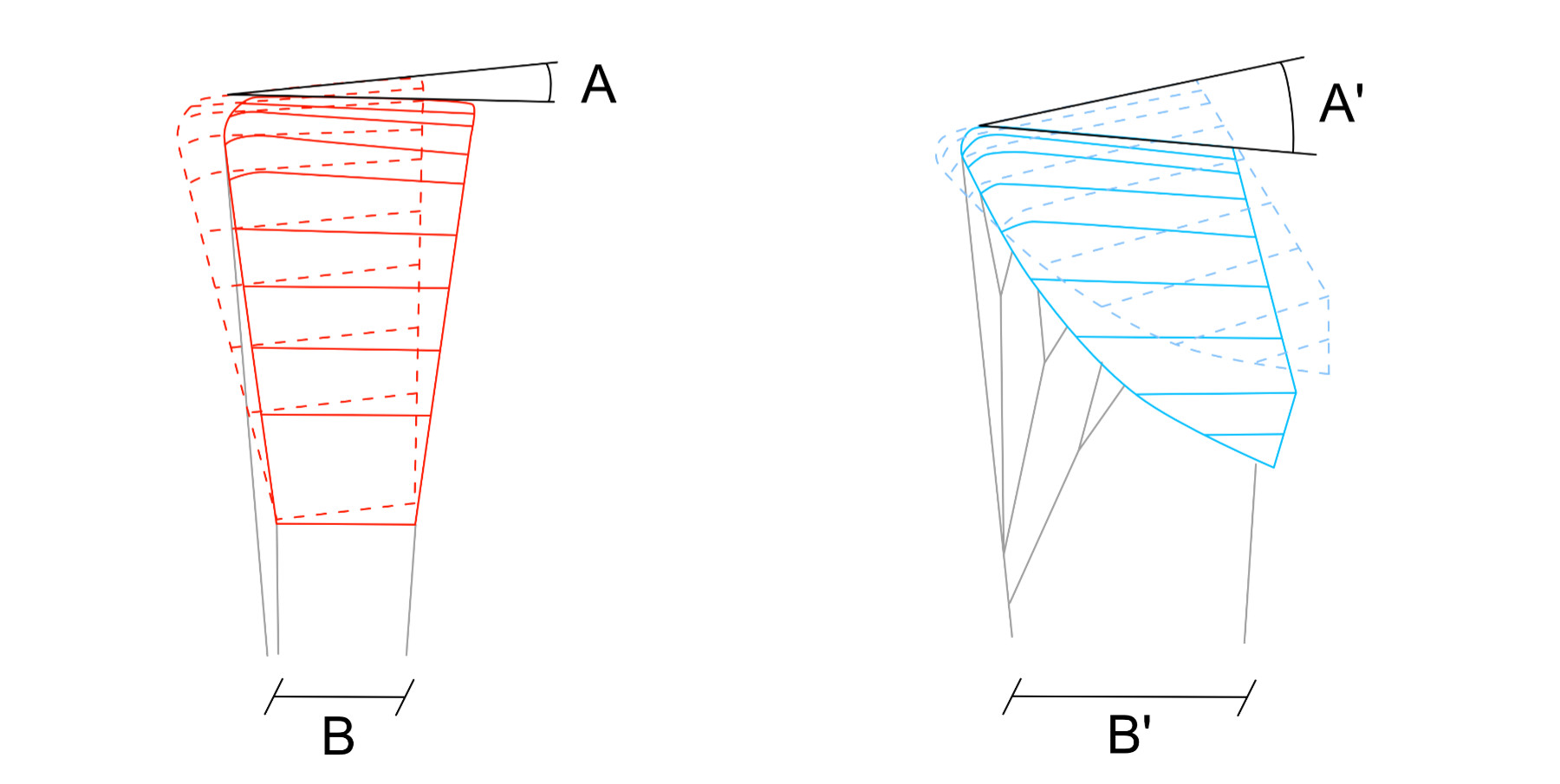
This effect is the key of the higher depower capabilities that flat kites have in comparison to C-shape kites, which have a limited possibility of changing their angle of attack.
Now we can understand how the combination of the shape and the bridle system leads to such different behaviors between the two arch shapes:
Flat kite
More Uplift and Power
Bigger Wind Range
Longer Hang time in Jumps
Bigger Depower (therefore, more safety)
C shape kite
Better lateral stability
Better behavior even with slack lines and in drifting (important for wake style)
More reactive and smoother steering
Of course, on the market, as every kiter knows, there are a lot of different models with different arch shapes, from almost pure C-shape to very flat ones:

ASPECT RATIO
The other important parameter to predict the power kite behavior is the aspect ratio. This characteristic of the kite shape is, as the name says, the proportion between different dimensions of the kite. There are different ways to calculate it, a good one is to divide the square of the kite span by its surface area.
We can see that in the next picture:
Put it more simplistically, the longer and thinner the kite is the more it has a high aspect ratio. On the contrary the wider section it has in comparison to its length, the lower aspect ratio.
Without deepening in a long theoretical explanation of the why, it is safe to say that high aspect ratio kites tend to be closer in shape to the ‘ideal aerodynamic wing’, with better performance in terms of lift and low drag in advancing due to minor turbulence creation. These better performances come with the price of an inferior turning speed, nervous behavior in gusty winds, and easier stall tendency in low wind conditions. The opposite of the low aspect ratio kites.
Main effects of the Aspect Ratio:
High Aspect Ratio
High efficiency: more power per square meter when moving. Fly faster, great upwind performance, more lift, glide and float in the air.
Can be very nervous in gusty winds.
Slower in turning and less depower at the bar when powered up.
Harder to relaunch.
Pretty easy to back stall in low winds (for a digression on kite stall check here)
Overall technical and demanding kite
Low Aspect Ratio
Turn quickly, though have less lift and float than high aspect kites.
More depower at the bar.
More stable in gusty winds and drift downwind well.
Easier to relaunch.
Unlikely to reach a back stall.
Overall forgiving kite
In sum, a high aspect ratio kite is more suitable for advanced riders competing in kite race or seeking big airs due to its high performances, while a low aspect ratio kite is more suitable for beginners or wave kiters due to its easy and forgiving behavior in turning, relaunching and gusts handling.
Once again, on the market, we can find any different nuance of aspect ratio between all the kite producers.
How do we choose at this point a kite, considering all the different parameters we have been talking about so far? Maybe a graph, combining these aspects, can help us make the choice clearer:

All Around/Hybrid: being in the center of the graph, they are a mid-way in between the main shape features and they are probably the market’s best sellers since they address the majority of riders, who want to try different disciplines and like to mix up a bit their riding style.
Beginners: in our opinion, they should head for a mid or low aspect ratio kite, with bigger ease of use, easier relaunch, and forgivingness. Maybe they should also lean to flatter shape kites for better power control and depower capabilities.
Wave: to ride the waves we want to almost forget about the kite at some point, so stability, easy gusts absorption, fast relaunch, and stable drifting are the main characteristic we would want. A low aspect ratio kite with a steeper arch shape seems to better provide this type of behavior.
Big Air: Want to jump high? You need a high-performance wing. That means a high aspect ratio. You might also want it to keep a bit of reactivity and smooth steering. For these characteristics, we would go for a middle arch shape.
Race: it is all about pure performance and power here. High aspect ratio and flat arch it the best combination.
Unhooked/Wake Style: Power, stability, slack behavior and drift control are the requirement here. A steep arch shape (C-shape) is a must. A tendency to high aspect ratio is the ideal, but not as dramatic as for race or big air kites, to avoid back stall in unhooked full-powered tricks.
Wow! That was a pretty long blog post. Let’s hope this can help anyone who had the patience to arrive at the end of this reading to be able to choose his/her next kite with more ease and confidence.
UPDATE: After Jame's request in the comments, we added a new graph where we included some of the best brands of kite and models. For sure this is not exhaustive on all what's on the market, it will be a bit provocative and it will raise a lot of comments on what is what, let's see how it will go:
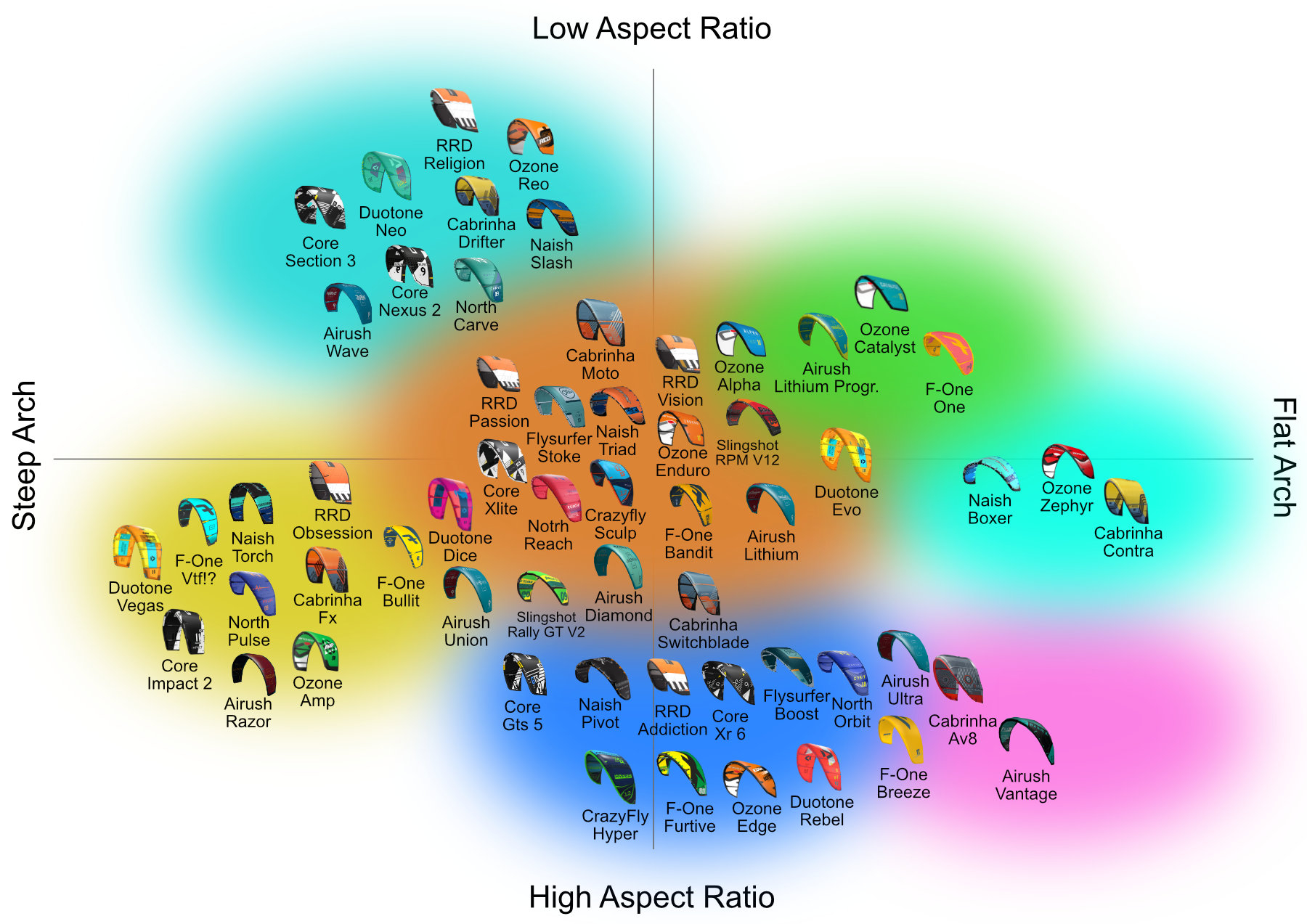
Since many requested a higher resolution of the previous image, I recently created a pdf downloadable document: click here to download it
Another very important quality of the kite is the drift capability, which is drammatically influenced by the shape, as explained in this post.
What do you think about this topic, do you agree with it? Do you have any interesting remarks?
What are your kite’s characteristics?
Please let us know in the comments below.

Flowy T-Shirt
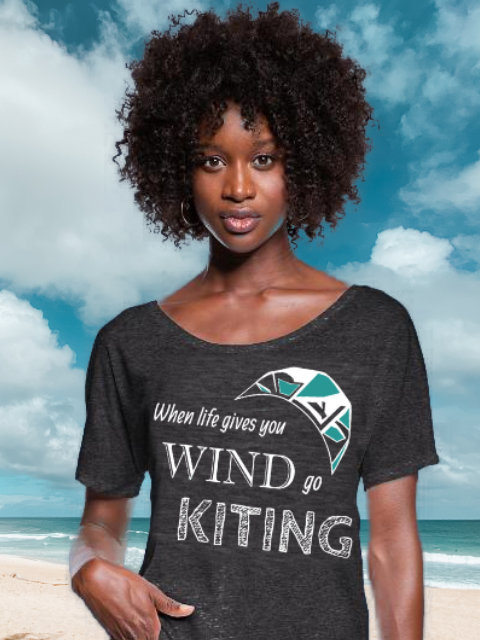
Logo: When life gives you wind go kiting!
Promote your Kite School for free!
Index your Kite School in our database.
You will get free lifetime visibility on Kitesurf Culture website.
If you have a website, it will provide precious backlinks to improve your SEO ranking
Relevant Posts
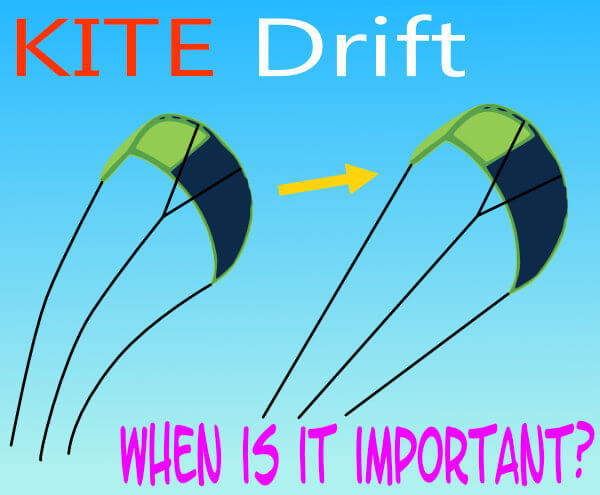
The ability of a kite to drift and when it is important.
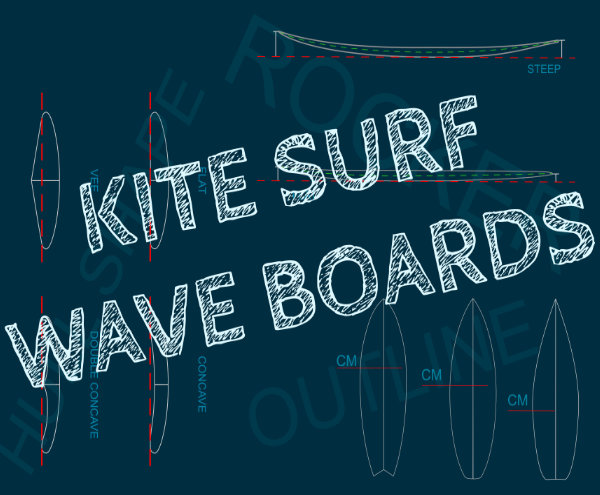
Kitesurfing wave boards, do you want to give them a try?
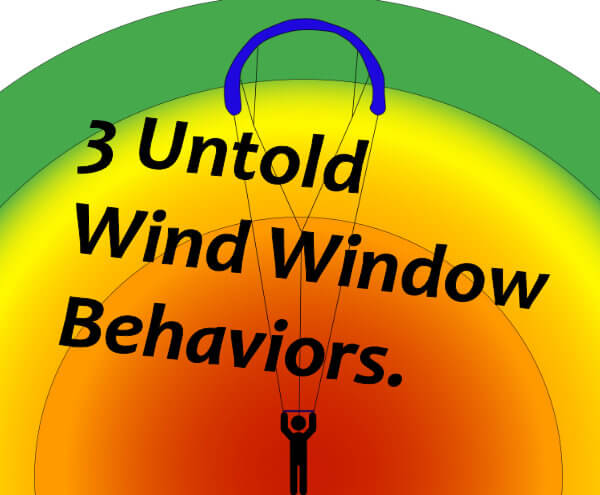
3 Untold Wind Window Behaviors.
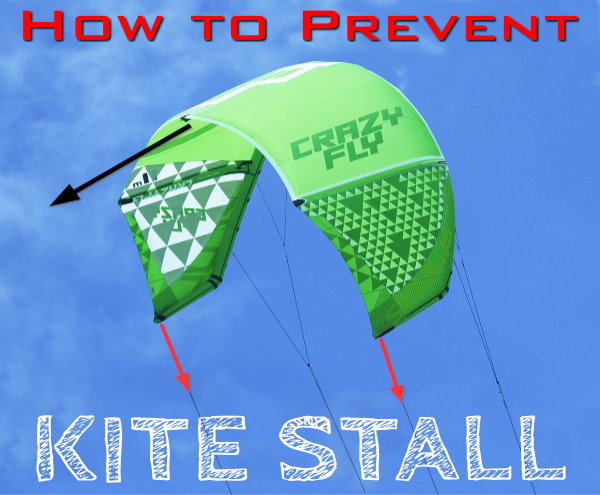
What's a Stall of a Kite and How to Prevent It

Kitesurf Line Length and Kite Behavior: Long or Short Lines?
Get free Kitesurfing Resources and Tips
If you like our content and you want to be informed on the next blogposts release, please subscribe here. That will also help us to continue to provide quality content:
Give us your opinion.
Comments
Francesco Gagliardi
such an interesting article! Will you be uploading kite models in the graph arch - aspect ratio?
one year ago
Answers :
Gabriele
Thank you Francesco, I normally update the kite models once every 2 years, last year I did not, so good chances to do it by the end of this :D
one year ago
Georgi
Great article, Mate! It is really comprehensive and concise - just what I needed before buying my gear!
2 years ago
Marco
Hey! I am wondering where Best Kites Roca V4 Tarifa and TS Pro ends up in this overview? Thanks again!
2 years ago
Tyua
Thank you a lot for this wonderful article. Where would suit eleveight kites in you figure please?
2 years ago
Simon
There's a lot of information out there and every now and then you come across some absolute gems. This is one of them. I'm always going back to this blog. Super helpful Gabrielle.
2 years ago
Answers :
Gabriele
Thank you so much, Simon, I really appreciate that you find the info useful and your kind comment!
2 years ago
Marek
I wonder where in that graph is the Reedin supermodel and new Cabrinha Nitro
2 years ago
Answers :
Gabriele
Hey Mark, the graph isn't meant to exhaust all kite models/brands, But in this case, I would put the Reedin supermodel close to the center and the new Nitro down in the center between CrazyFly Hyper and F-one Furtive. I will try to include those someday in the graph
2 years ago
Greg
Thank you so much for your kind messages. To make this a bit easier
3 years ago
Lene
Brilliant job Gabriele! Super useful for those of us who've only ever flown one or two brands and are looking to explore others. Am sharing this with all my friends. Thank you! I've learnt on Ozone Enduros
3 years ago
Answers :
Gabriele
Thank you very much, Lene! It is a pleasure to know the article is helpful.
3 years ago
Pekka
Your post on kite shapes and the graph: Flysurfer is missing from the brands?
4 years ago
Answers :
Gabriele
Hey Pekka, sorry for the really late reply. I updated the shapes graph with the SLE kite models from Flysurfer (Stoke and Boost). The foil kites are a bit out of this article's topic.
3 years ago
Ivan
Gabriele, I am sorry for writing too much here :))) I would also vote up for including foil kites in the classification because some of them are suitable for water too, and others may be covered by the same classes for example for snow. There may be the need to mark them separately on the graph to distinguish from LEI kites. Example brands are: Flexifoil, HQ, Paraavis, etc.
3 years ago
Stu
Your blog posts are super helpful! Thanks for all the good information.
4 years ago
Gaetano
the kites are positioned randomly inside the group of the graph right? I mean, they are correctly positioned inside their group, but randomly positioned between them in the group, because I see the Ozone Edge near to the central part of the graph when should be one of the most high aspect LEI kites existent and more toward the race
4 years ago
Answers :
Gabriele
You are absolutely right, Gaetano. The graph, as explained, is more of a general assessment of the characteristics of the kites but, inside the groups, specifics of the kite were not considered in relation to each other. But, if you have other suggestions as to the one below, feel free to let me know, so I can refine the graph. I will update it with what you just suggested.
4 years ago
Ivan
Gabriele, your post and your classification idea is great! I would suggest to improve that graph by plotting exact numerical parameters of kite shapes.
You already have (I hope so) one of them - the aspect ratio. The second - the arc shape - can be parameterized by an inscribed circle minor (or major) subtending arc angle (see the picture). The lesser the angle - the flatter the shape, and the opposite. However, this one may be more difficult to obtain.
Maybe you can also build and publish the parameter table so it can be updated further by a community.
 https://ibb.co/qMXX4BP
https://ibb.co/qMXX4BP
3 years ago
Gabriele
Thank you Ivan! I was thinking something like that, I will probably do it soon. Feel free to drop any ideas or numbers if you want to help :).
About the arch shape, I think it is more indicative a ratio between the width and the central height like the image below.

3 years ago
Ivan
Gabriele, thank you for your prompt answer. Yes I think these parameterizations are correlated somehow, but yours may be more intuitive and closer to those who are familiar with aspect ratios and easier to calculate. Moreover, you can name it perpendicular/transversal aspect ratio instead of traditional flat/tangential AR ))) Maybe in the future producers will also publish these ratios in their sheets if this classification become a kind of standard. I don't have any numbers and I am not even a kiter at the moment. I am just trying to select my first power kite to test it :)) So I can only have theoretical ideas related to kiting or any industry issues and problems, and I don't know how to help.
3 years ago
Duckduck
Interesting! too bad you didn't include any ozone kites in the graph...
5 years ago
Answers :
Gabriele
Hey Duckduck, as you asked, I included Ozone kites in the graph. I am curious to hear from you if you have any comments or remarks on it. I also added a downloadable PDF at a higher resolution for anyone interested in it.
5 years ago
Evan
Best post I’ve seen on this topic, thank you!
5 years ago
Answers :
Gabriele
Thank you Evan, it is a pleasure to hear it is appreciated. Please feel free to share it with your friends.
5 years ago
Johan N
Where would you put the North kites (Orbit, Pulse, Reach and Carve) on that chart? :)
5 years ago
Answers :
Johan N
Excellent blog post by the way! Perfect to share with students that wants more insight on how the type of kite affects them. And a little help in knowing what to look for and avoid on the used market.
5 years ago
Gabriele
Thank you Johan for the appreciation and sorry for the late reply. I have added to the graph the North kite line. Give it a look and let me know if you agree with my opinion. And please, share this post as much as you like :)
5 years ago
Jon
where would naish lineup fit? pivot, triad, slash.. etc?
5 years ago
Answers :
Gabriele
Hello Jon! Thanks for the reminder. Leaving out of the table Naish was not right :-) I added Pivot, Triad, Slash, and Boxer to the graph. Please let me know what you think and if you agree with their positions. Share my post with your friends and see also what they have to say!
5 years ago
Jon Doe
thanks for input, Gabriele... i'm a beginner.. so pretty sure u know much more than me :-) i was thinking of pivot or slash.. was leaning more towards pivot, but now i'm thinking slash will be more forgiving for me as a first kite.. easier to relaunch, more stable.. maybe even less power. all good for a noob like me :) what do you think?
5 years ago
Gabriele
My Pleasure Jon, I think you got it right, Slash it will be more forgiving and easier to relaunch. Pivot is more oriented to big airs and for that needs a much higher aspect ratio to deliver lift performance. These days though the ease of use and relaunch capabilities are more homogenous through the different types of kites than several years ago and you might also consider the Pivot because the other variable is how long you plan to use the kite and what discipline you think you want to practice. Also how often you have sessions: if for example, you can kite regularly every week you can think you can adjust faster to more tricky kites, on the contrary, if you can practice with less regularity it is better to consider an easier one.
5 years ago
Martin
Hi! This is a great article! I would like to know, where in the spectrum a slingshot RPM or a Slingshot Rally GT would fall, compared to the other kites
5 years ago
Answers :
Gabriele
Hey Martin, I have not tried them lately, but, from what I see, Slingshot has a very interesting concept for the RPM of a flat C shape kite, probably to provide more power, maybe losing a bit in stability in gusts. On the opposite, the Rally, which used to be a pretty flat bow kite is changing towards a higher aspect ratio and a steeper arch shape, probably to match the market requests for high performance and hangtime. Anyway, I added them in the graph. Let me know what you think about it.
5 years ago
Martin
Hi Gabriele, thank you for your quick response. It's interesting to see where those two kites are. Especially as the RPM is marketed as a kite for unhooked tricks, yet the geometry seems to put it more to the allround/beginner section. For the Rally GT, I would think that's the spot that I also had in mind.
5 years ago
Gabriele
I agree with you Martin, I would definitely try the RPM, I am very curious about its behavior and performance.
5 years ago
Casey Murray
Thank you for this, I’m new to the sport and this is a very helpful breakdown. Any chance you could add ozone kites into the graph?
5 years ago
Alexandre Guignot
Amazing article Gabriele thank you so much for that! I’m particular your graph with the different brands and kites is so useful to understand what you should buy. Would you have the data that went into this graph available?
5 years ago
Answers :
Gabriele
Thank you Alexandre for your appreciation. The info for the graph was gathered thanks to friends and instructors who have experience with different brands. I myself used a lot of Duotone, Crazyfly, and Cabrinha. At the moment I haven't an organic document, but I was considering to assemble it. I will let you know for sure when it will be done :-)
5 years ago
Peter Gilmer
Hi Gabriel.. A brilliant article ! I am 95kg and have a 2018 11m Switchblade which is brilliant for jumps but n ow learning loops and its so slow in turning. I didnt realise how bad it was until i started loops ! I dont go into the waves, ever...I love the stability and power range of the SB. I was looking at a CORE XR6 but this charts suggests a middle arch for better turning...so maybe a NEO What options would you suggest ?
5 years ago
Answers :
Gabriel
Hello Peter, I have to say that I like a lot the Cabrinha switchblade, but yes, when it comes to kite looping isn't for sure the fastest animal out there. For your choice for a good looping kite, but still not a full C shape, I would go more on the Core GTS5 if you want to stick with the Core family. I myself used the Duotone Dice and it was quite fun. The Core XR6 seems to me to still have a bit of open arch for looping, but I actually never tried it. Best advice is often the same: if you have the chance, try these kites before purchasing any.
5 years ago
Bill
Just read this, awesome info just getting into kiting, really helpful looking at new kites
5 years ago
Christian Bulota
Hi Gabriele, this is an excellent article. I am sharing with my students and customers
5 years ago
Answers :
Gabriele
Thank you, Christian! My pleasure to hear your appreciation, please do :-)
5 years ago
Gordon Cassar
Thanks for the info very interesting
6 years ago
Phil
Excellent summary. Good job.
6 years ago
Answers :
Gabriel
Thank you Phil, I really appreciate when the content is useful and interesting for fellow kiters!
6 years ago
Michael Wilson
Very informative , thank you
6 years ago
Michael Wilson
What is the highest that a kite surfer has flown?
6 years ago
Answers :
Gabriel
Hi Michael, what exactly do you mean? Jumping or longest line length? Nick Jacobsen achieved the world record for the highest kite jump measured by WOO Sports on February 19, 2017 in Cape Town with 28.6 meters
6 years ago
Marcel
just search youtube, there's a guy that flies approx 150 meter high.
5 years ago
Al
Fantastic blog. I’m getting back into kitesurfing and this was exactly what I needed to read about the new designs
6 years ago
Answers :
Gabriel
Thanks Al, consider subscribing to our Newsletter to get our new blog posts as we publish them!
6 years ago
James
Nice roundup but not so useful without catagorising kite makes/models in the types you highlight. Is this kite a that, or a this? What's the baseline and extremes? If you don't know what the extremes are, you can't know if you have a middle of the road or an extreme.
6 years ago
Answers :
Gabriel
This could be a good point James, maybe I will add another similar table with some kite model. what's your for example?
6 years ago
Baran
Hi Gabriel Woww!! These are extremely useful data. Thank you. Great job. Is it possible to add a chart with aspect ratio info of the kite and models and add some other brands like North and Naish? Thank you
6 years ago
Gabriel
Hi Baran, Thank you for the appreciation, on your request we will add soon the brands you asked. The graph is basically qualitative more than quantitative, for the precise info for aspect ratio chart we need to maybe add them separately because it would make the last chart probably unreadable. I will let you know when those brands will be added.
6 years ago
Hans
Well done. explaining the intricate balance
6 years ago
Contrast Coffee Mug
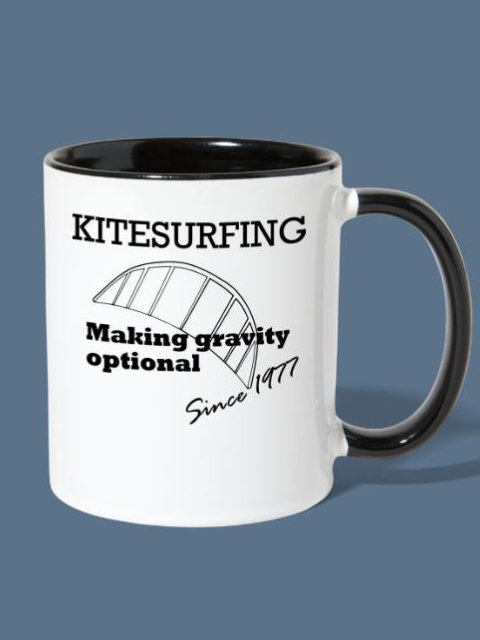
Logo: Kitesurfing making gravity optional since 1977
Promote your Kite School for free!
Index your Kite School in our database.
You will get free lifetime visibility on Kitesurf Culture website.
If you have a website, it will provide precious backlinks to improve your SEO ranking
Relevant Posts

The ability of a kite to drift and when it is important.

Kitesurfing wave boards, do you want to give them a try?

3 Untold Wind Window Behaviors.

What's a Stall of a Kite and How to Prevent It

Kitesurf Line Length and Kite Behavior: Long or Short Lines?
Toddler Premium T-Shirt
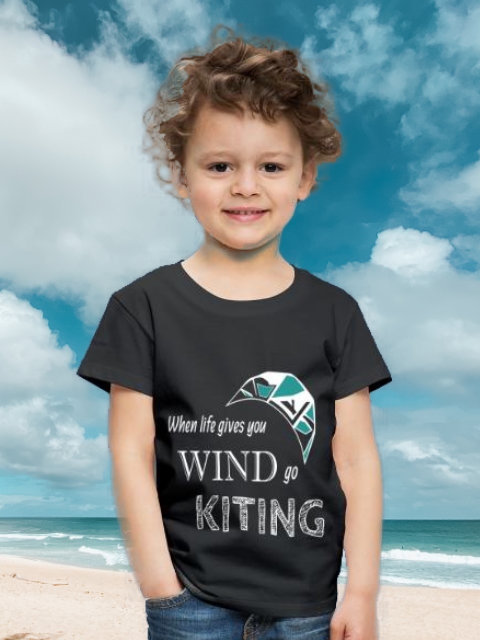
Logo: When life gives you wind go kiting
Latest Posts
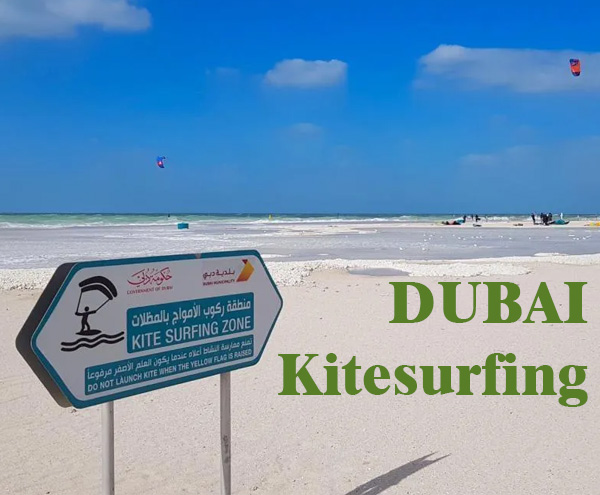
Kitesurfing Dubai: an honest guide. Tips, Spots & Winds
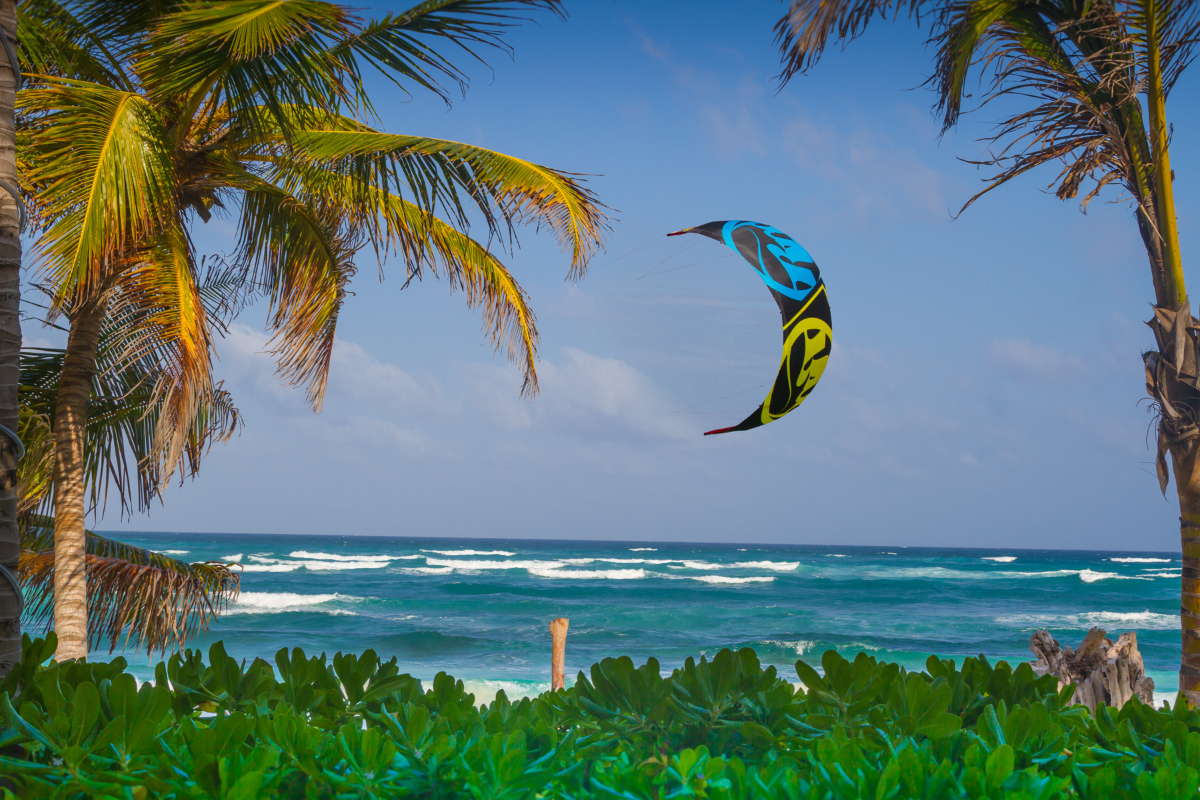
Unwind and learn: best beginner kitesurfing spots worldwide
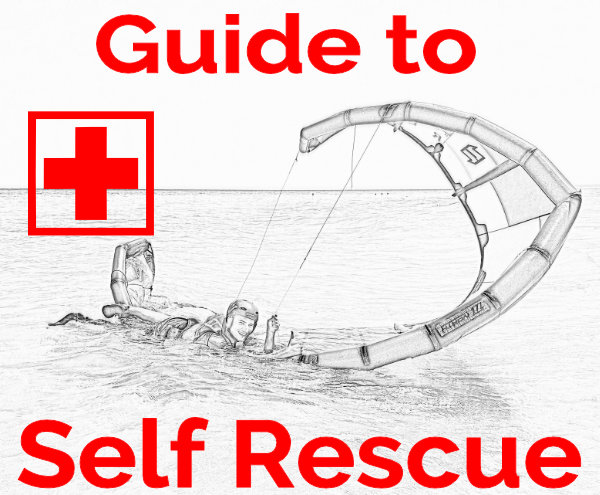
Self-Rescue in Kitesurfing: A Crucial Guide to Safety
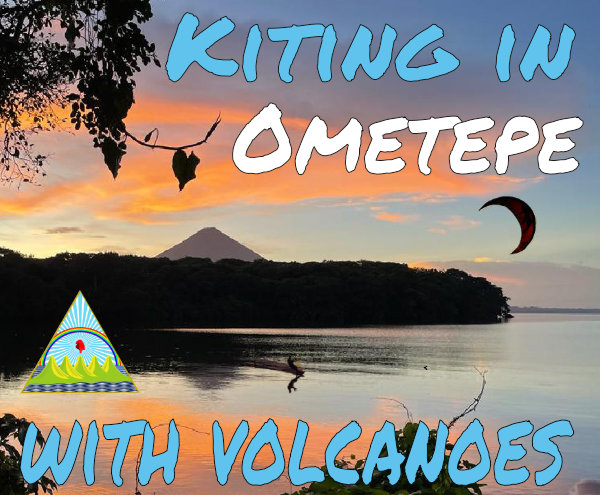
Kitesurf Ometepe: an Epic Kite Trip to Nicaragua

Kitesurfing Spring in Andalucia: Unexpectedly Great!
